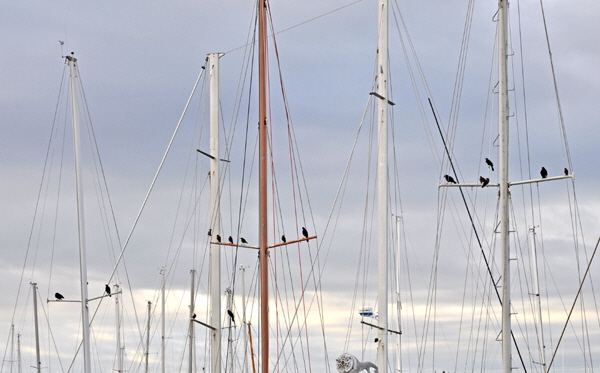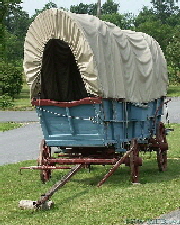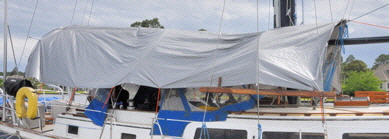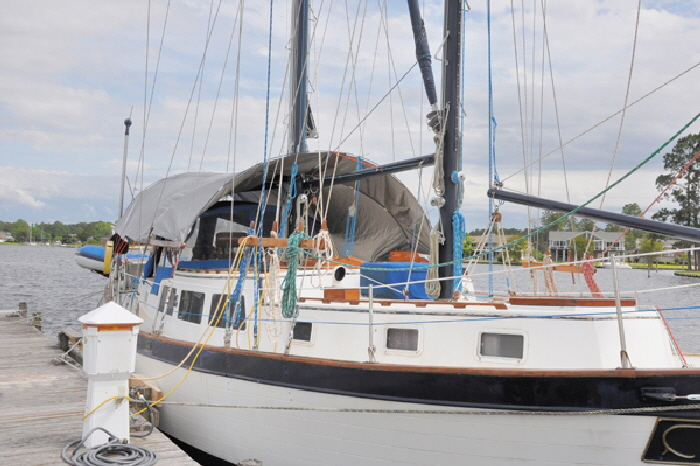 If a sailboat lies unattended even for a short time, decks and canvas can quickly become grubby from bird droppings and windblown dust. Fifty of the little darlings can be perched along the triatic stay on Britannia, all having a merry chirp while doing other things…
If a sailboat lies unattended even for a short time, decks and canvas can quickly become grubby from bird droppings and windblown dust. Fifty of the little darlings can be perched along the triatic stay on Britannia, all having a merry chirp while doing other things…
It's practically impossible to keep birds off every part of a sailboat's rigging when they can even hang on vertical stays. The most effective and the cheapest method for keeping bird droppings off a sailboat is an awning.
 There is also a secondary benefit from a good awning; it keeps the temperature down inside the boat, in Britannia’s case by some 10 degrees Fahrenheit when it's 90 outside.
There is also a secondary benefit from a good awning; it keeps the temperature down inside the boat, in Britannia’s case by some 10 degrees Fahrenheit when it's 90 outside.
 Britannia has an awning based upon the shape of covered wagons and the advantage is that it clears the Bimini and boom to allow wind to pass through. This inexpensive awning protects Britannia's Bimini from weather as effectively as any expensive custom-made canvas cover and due to the increased height of the supports it is possible to comfortably move along the side decks. Rain just runs off, washing bird droppings with it.
Britannia has an awning based upon the shape of covered wagons and the advantage is that it clears the Bimini and boom to allow wind to pass through. This inexpensive awning protects Britannia's Bimini from weather as effectively as any expensive custom-made canvas cover and due to the increased height of the supports it is possible to comfortably move along the side decks. Rain just runs off, washing bird droppings with it.
